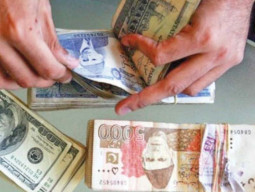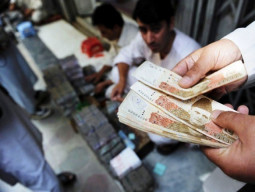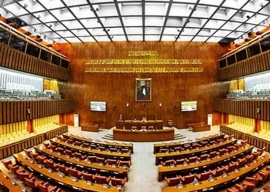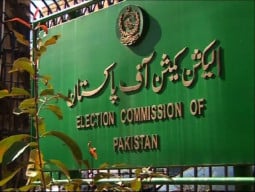
When you are running in the wrong direction the fastest and biggest leap will just take you closer to the crash. The direction has been and continues to be one of zero tax reforms, crippling reliance on debt, and counterproductive energy policies. However, as rightly assessed, the ordinary person cannot make out the truth of these lofty claims of the government bombarded through press conferences and fancy advertisements.
However, for people more aware of economic matters, it places greater responsibility to create awareness of how this very exercise is soaked in misreporting and misrepresenting how the money of the taxpayer is being spent. Nearly all global agencies have reprimanded Pakistan on the authenticity of its data. The IMF and the World Bank have openly written on the unreliability of figures presented by the government on many occasions. But when those who calculate statistics, ie, the Pakistan Bureau of Statistics (PBS) and those who use them (finance ministry) answer the same boss then the doctrine of necessity determines which number to place under what head. And that is the beauty of numbers, put them in a different category and losses turn into profits and expenditures into revenues.
Many experts, especially those from the Institute of Policy Research, have questioned the GDP growth rate of 5.3% on a scientific basis. But some very simple calculations can also expose this miracle budgeting. Agriculture and industry comprise the bulk of growth in our country. Sixty per cent of growth is agro-based and if the agriculture sector has grown 3.5%, large-scale manufacturing at 4.9%, exports have dipped -2%, electricity 4.5%, it is almost impossible to grow 5.3%.
Another way of showing growth and positive performance is by not accounting for and showing negative performance. Mega expenditures have been parked and not included in the expenses. Circular debt has reared its ugly head again and has been pushed and parked in some invisible head. This is not a small amount; in fact, it is a whopping Rs405 billion. Similarly, Rs350 billion in guarantees given by the government against various projects have not been directly included in the finance bill. Simply put, despite being a deficit budget, the deficit is understated giving an overstated picture of the health of the economy.
The problem with accounting jugglery is that it inevitably backfires in a disastrous way. In the corporate world, this has serious illegal and unethical consequences. Understating expenses to show inflated profits is severely punished. The latest example is Toshiba company where inflated profits of almost $1 billion led to the dismissal of the CEO and huge penalties to the company. However, governments in Pakistan get away with it as auditor general reports that point out these deviations are discarded and deleted at the convenience of the decision makers.
The file goes away but the problems stay. They become bigger and monstrous and start breaking away these superficial shields of empty numbers. Take, for example, the energy crisis. The PPP government failed to deal with the circular debt and failed to reform the sector with the result that energy became the main reason for their poor electoral performance outside Sindh. The present government came and wisely dealt with the circular debt by making payments to the IPPs of an amount of Rs480 billion. There was an improvement in the load-shedding schedule for the people. However, the relief was short-lived. Circular debt came back and there have been many questions on where did almost $5 billion go if the debt was not settled. A report by Rana Bulund Akhtar revealed many illegalities in settling the payments but this was dismissed by the PML-N government as a report made by a PPP loyalist who was, as a result, also removed from his post.
As earlier stated, you can remove the person but not the problem. Not surprisingly after four years of multiple billion dollar investment in power plants the Pakistan Economic Survey shows that power production dropped to 85,206 GWh in March to July 2017 from 101,970 GWh during March to July 2016. That is why we are seeing record shortfalls and unprecedented load-shedding in Ramazan. Numbers are good for accounting templates, press conferences, and Power point presentations but they cannot indefinitely hide the truth. In fact, the more you hide it, the more viciously it will make its presence felt when it breaks through the figure-fudging veneer.
The results of a direct physical distress create public uproar and catches media attention to invite debate and some solutions. Load-shedding will command that attention and respect. The prime minister worried by the mob behaviour of public has ordered a recheck of the real facts on energy. But the dangerous parts are the neglected areas that are far more crucial to development but will never become centre of public or media attention, ie, education, environment, health, culture, art that have been hardly mentioned in the Economic Survey and the budget.
Too often education has been amputated to accommodate the mega project race. Literacy rates have decreased by 2% to 58% from 60% this year. This is a shuddering reality. With more people illiterate, there is going to be more brains astray. The population will keep on exploding and as you deny normal education to these minds the extremist education nurseries will become a natural alternative. That is why this economic shield based on number dressing is so deceptive and dangerous and every voice needs to be raised to activate a stand against this uncontested statistical corruption.
Published in The Express Tribune, June 4th, 2017.
Like Opinion & Editorial on Facebook, follow @ETOpEd on Twitter to receive all updates on all our daily pieces.































1714129906-0/Clint-Eastwood-(1)1714129906-0-270x192.webp)






COMMENTS
Comments are moderated and generally will be posted if they are on-topic and not abusive.
For more information, please see our Comments FAQ